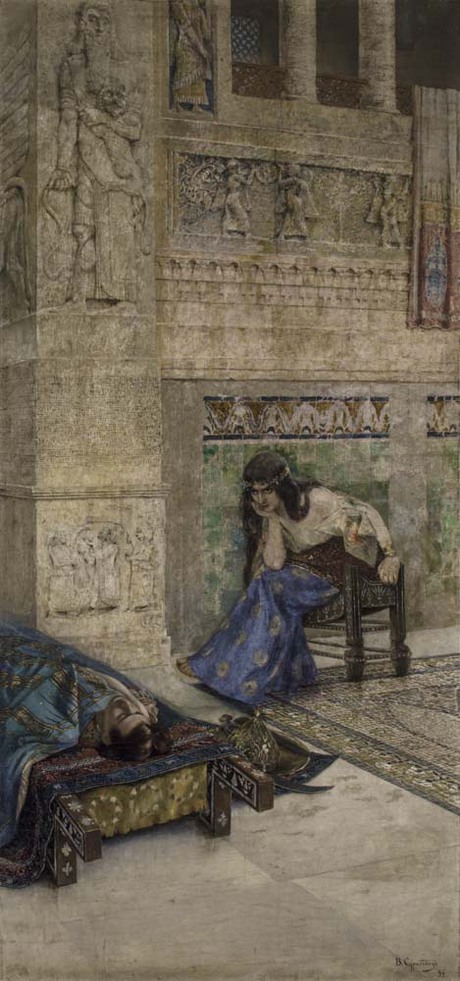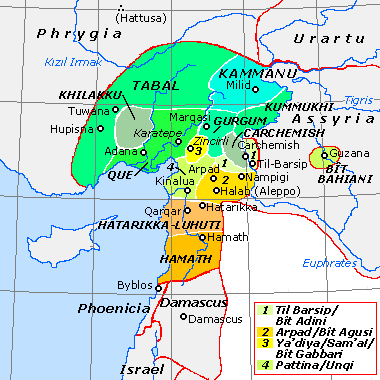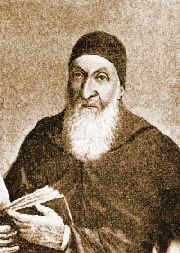|
Aramu
Arame or Aramu (Armenian: Արամե; ruled 858–844 BC) was the first known king of Urartu. Living at the time of King Shalmaneser III of Assyria (ruled 859–824 BC), Arame fought against the threat of the Assyrian Empire. His capital at Arzashkun was captured by Shalmaneser. Sagunia, a previous capital, which was also captured by Shalamaneser, seems to have been located in the vicinity of Lake Van or Lake Urmia. Arame has been suggested as the prototype of both Aram (and, correspondingly the popular given name Aram) and Ara the Beautiful, two of the legendary forefathers of the Armenian people. Khorenatsi's ''History'' (1.5) puts them six and seven generations after Haik, in the chronology of historian Mikayel Chamchian dated to the 19th to 18th century BC. The name Arame is likely an Armenian name originally derived from Proto-Indo-European ''*rēmo-'', meaning "black". The name is likely etymologically related to Hindu Rama.Petrosyan, Armen. ''Toward the Origins of th ... [...More Info...] [...Related Items...] OR: [Wikipedia] [Google] [Baidu] |
Urartu
Urartu (; Assyrian: ',Eberhard Schrader, ''The Cuneiform inscriptions and the Old Testament'' (1885), p. 65. Babylonian: ''Urashtu'', he, אֲרָרָט ''Ararat'') is a geographical region and Iron Age kingdom also known as the Kingdom of Van, centered around Lake Van in the historic Armenian Highlands. The kingdom rose to power in the mid-9th century BC, but went into gradual decline and was eventually conquered by the Iranian Medes in the early 6th century BC. Since its re-discovery in the 19th century, Urartu, which is commonly believed to have been at least partially Armenian-speaking, has played a significant role in Armenian nationalism. Names and etymology Various names were given to the geographic region and the polity that emerged in the region. * Urartu/Ararat: The name ''Urartu'' ( hy, Ուրարտու; Assyrian: '; Babylonian: ''Urashtu''; he, אֲרָרָט ''Ararat'') comes from Assyrian sources. Shalmaneser I (1263–1234 BC) recorded a campaign ... [...More Info...] [...Related Items...] OR: [Wikipedia] [Google] [Baidu] |
List Of Kings Of Urartu
This article lists the kings of Urartu (Ararat or Kingdom of Van), an Iron Age kingdom centered on Lake Van in eastern Asia Minor. Early kings *Arame (also Aramu, Arama) 858 BC–844 BC *Lutipri 844 BC–834 BC (?) Rise to power *Sarduri I (also Sarduris I, Sedur I, Asiduri I) 834 BC–828 BC; known in Assyrian sources as Ishtarduri, moved the capital to Tushpa, expanded the fortress of Van, possibly established new dynasty. * Ishpuini (also Ishpuinis, Ispuini) the Establisher 828 BC–810 BC; expanded the empire and conquered Musasir. *Menua (also Menuas, Minua) the Conqueror 810 BC–785 BC; initially ruled jointly with his father Ishpuini and later jointly ruled with his son, Inushpua, greatly expanded the kingdom, organized the centralized administrative structure, fortified a number of cities and founded fortresses, developed a national canal and irrigation system. *Inushpua 788–786 BC (?); co-ruled with his father, Menua. Possibly killed in battle. ... [...More Info...] [...Related Items...] OR: [Wikipedia] [Google] [Baidu] |
Arzashkun
Arzashkun or Arṣashkun ( Armenian: Արծաշկուն) was the capital of the early kingdom of Urartu in the 9th century BC, before Sarduri I moved it to Tushpa in 832 BC. Arzashkun had double walls and towers, but was captured by Shalmaneser III in the 840s BC. Name Arzashkun seems to be the Assyrian form of an Armenian name ending in -ka formed from a proper name Arzash. The root of Arzashkun may ultimately be Proto-Indo-European ''*harg-'' or *h₂erǵ-', meaning "bright, white", by way of Proto-Armenian intermediaries "Arcesk'o" and then "Arčešo" (genitive: "Arčišoy"). Arzashkun was hidden, and protected from attack, by a dense forest almost impassable to a regular army. Location The precise location of the city is uncertain. It has been located variously by different scholars as along the shore of Lake Van, near Lake Urmia, near Malazgirt, or at Bostankaya between Malazgirt and Patnos. According to Robert Hewsen and Armen Petrosyan, Arzashkun was at the north ... [...More Info...] [...Related Items...] OR: [Wikipedia] [Google] [Baidu] |
Lutipri
Lutipri was the father of the Urartian king Sarduri I. Lutipri may have ruled Urartu between 844 and 834 BCE, in a period of obscurity after the destruction of the former capital Arzashkun by Shalmaneser III, and before Sarduri's foundation of the new capital at Tushpa. As Sarduri I may have established a new dynasty, it is possible that his father, Lutipri, was not actually a king of Urartu. Attestation An inscription, in Assyrian cuneiform, on a small fortification west of the citadel of Tushpa, mentions his son as builder of a wall, and it is likely that he is in fact the founder of the town. The inscription reads: References See also *List of kings of Urartu This article lists the kings of Urartu (Ararat or Kingdom of Van), an Iron Age kingdom centered on Lake Van in eastern Asia Minor. Early kings * Arame (also Aramu, Arama) 858 BC–844 BC * Lutipri 844 BC–834 BC (?) Rise to power * Sard ... Urartian kings 9th-century BC rulers {{Armenia-r ... [...More Info...] [...Related Items...] OR: [Wikipedia] [Google] [Baidu] |
Ara The Beautiful
Ara the Handsome ( hy, Արա Գեղեցիկ ''Ara Gełec‘ik'') is a semi-legendary Armenian hero and king. Ara is notable in Armenian literature for the popular legend in which he was so handsome that the Assyrian queen Semiramis waged war against Armenia to capture him and bring him back to her, alive. Ara is sometimes associated Arame of Urartu, who ruled the Kingdom of Urartu Biainili during the 9th century BC. Genealogy In Movses Khorenatsi's ''History of Armenia'', Ara the Handsome is presented as the son of Aram and a descendant of Hayk, the legendary forefather of the Armenians. Khorenatsi writes that Ara the Handsome had a son, also named Ara, by his wife, Nuard (Nvard). Ara, son of Ara, who was twelve years old at the time of his father's death, was appointed ruler of Armenia by Semiramis and later died in a war against her. Legend According to the legend, Semiramis (''Shamiram'' in Armenian) had fallen in love with the handsome Armenian King and asked him to ... [...More Info...] [...Related Items...] OR: [Wikipedia] [Google] [Baidu] |
David Marshall Lang
David Marshall Lang (6 May 1924 – 20 March 1991), was a Professor of Caucasian Studies, School of Oriental and African Studies, University of London. He was one of the most productive British scholars who specialized in Georgian, Armenian and ancient Bulgarian history. Biography Lang was born in Bromley and was educated at Monkton Combe School and St John’s College, Cambridge where he was a Major Scholar and later held a Fellowship. Aged 20, having graduated from Cambridge, he was an officer in Iran when he was appointed in 1944 as acting Vice-Consul in Tabriz, Iran, where he acquainted himself with the city's Armenian population. In 1949 he was the member of staff for the School of Oriental and African Studies at University of London. He began as Lecturer in Georgian language, then as Reader and in 1964 he became Professor of Caucasian Studies. In 1953 he held a Senior Fellowship at the Russian Institute of Columbia University and in 1965 he was a visiting Professor in C ... [...More Info...] [...Related Items...] OR: [Wikipedia] [Google] [Baidu] |
Bit Agusi
Bit Agusi or Bit Agushi (also written Bet Agus) was an ancient Aramaean Syro-Hittite state, established by Gusi of Yakhan at the beginning of the 9th century BC. It had included the cities of Arpad, Nampigi (Nampigu) and later on Aleppo Arpad was the capital of the state-kingdom. Bit Agusi stretched from the A'zaz area in the north to Hamath in the south. Chronology According to Dan'el Kahn, there were seven stages of Bit Agusi history in Northern Syria in the ninth and eighth centuries BC. * Stage 1 (858–ca. 842 BC). Early on, Bit Agusi was apparently free of political alliances with neighbors. Arame, the second king of Bit Agusi, submitted to Assyria freely in 858 BCE, along with many other rulers of the region, including the southern Anatolia. * Stage 2 (841–823 BC). A period of Bit Agusi subjugation to Assyria. * Stage 3. Around 823 BC, or maybe a little later, Bit Agusi leads a local alliance opposing Assyrian hegemony, and achieves independence. * Stage 4. Also, soon ... [...More Info...] [...Related Items...] OR: [Wikipedia] [Google] [Baidu] |
Rama
Rama (; ), Ram, Raman or Ramar, also known as Ramachandra (; , ), is a major deity in Hinduism. He is the seventh and one of the most popular '' avatars'' of Vishnu. In Rama-centric traditions of Hinduism, he is considered the Supreme Being. Rama is said to have been born to Kaushalya and Dasharatha in Ayodhya, the ruler of the Kingdom of Kosala. His siblings included Lakshmana, Bharata, and Shatrughna. He married Sita. Though born in a royal family, their life is described in the Hindu texts as one challenged by unexpected changes such as an exile into impoverished and difficult circumstances, ethical questions and moral dilemmas. Of all their travails, the most notable is the kidnapping of Sita by demon-king Ravana, followed by the determined and epic efforts of Rama and Lakshmana to gain her freedom and destroy the evil Ravana against great odds. The entire life story of Rama, Sita and their companions allegorically discusses duties, rights and social responsibili ... [...More Info...] [...Related Items...] OR: [Wikipedia] [Google] [Baidu] |
Proto-Indo-European Language
Proto-Indo-European (PIE) is the reconstructed common ancestor of the Indo-European language family. Its proposed features have been derived by linguistic reconstruction from documented Indo-European languages. No direct record of Proto-Indo-European exists. Far more work has gone into reconstructing PIE than any other proto-language, and it is the best understood of all proto-languages of its age. The majority of linguistic work during the 19th century was devoted to the reconstruction of PIE or its daughter languages, and many of the modern techniques of linguistic reconstruction (such as the comparative method) were developed as a result. PIE is hypothesized to have been spoken as a single language from 4500 BC to 2500 BC during the Late Neolithic to Early Bronze Age, though estimates vary by more than a thousand years. According to the prevailing Kurgan hypothesis, the proto-Indo-European homeland, original homeland of the Proto-Indo-Europeans may have been in th ... [...More Info...] [...Related Items...] OR: [Wikipedia] [Google] [Baidu] |
Mikayel Chamchian
Mikayel Chamchian)․ ( hy, Միքայէլ Չամչեան, 4 December 1738 – 30 November 1823), known also in English as Michael Chamich, was an Armenian Mekhitarist monk, historian, grammarian and theologian. He is best known for writing a comprehensive and influential history of Armenia in three volumes. Biography Mikayel Chamchian (whose baptismal name was Karapet) was born in Constantinople in 1738 to Abraham Chamchian. He received his primary education in Constantinople's Catholic schools, then was trained as a jeweler by his distant relative, the imperial jeweler and amira Mikayel Chelebi Duzian. Although Chamchian gained renown as a jeweler and had the opportunity to join Duzian as a full business partner, he instead decided to abandon secular life and join the Mekhitarist Congregation. In March 1757, Chamchian left for the Mekhitarists' monastery on the island of San Lazzaro degli Armeni in Venice with a letter of recommendation from Mekhitarist fathers Mikayel Sebas ... [...More Info...] [...Related Items...] OR: [Wikipedia] [Google] [Baidu] |
Hayk
Hayk ( hy, Հայկ, ), also known as Hayk Nahapet (, , ), is the legendary patriarch and founder of the Armenian nation. His story is told in the '' History of Armenia'' attributed to the Armenian historian Moses of Chorene ( Movses Khorenatsi) and in the ''Primary History'' traditionally attributed to Sebeos. Fragments of the legend of Hayk are also preserved in the works of other authors, as well as in Armenian folk tradition. Etymology The name of the patriarch, ''Hayk'' (), is not exactly homophonous with the Armenian name for "Armenia," ''Haykʻ'' (). In Classical Armenian, ''Haykʻ'' is the nominative plural of ''hay'' ( հայ), the Armenian word for "Armenian." While Robert W. Thomson considers the etymology of ''Haykʻ'' (Հայք) from ''Hayk'' (Հայկ) to be impossible, other scholars consider the connection between the two to be obvious and derive ''Hayk'' from ''hay''/''Haykʻ'' via the suffix ''-ik''. Martirosyan, Hrach (2010). ''Etymological Dictionary of ... [...More Info...] [...Related Items...] OR: [Wikipedia] [Google] [Baidu] |
History Of Armenia (Moses Of Chorene)
The ''History of Armenia'' ( hy, Պատմություն Հայոց, ''Patmut'yun Hayots'') attributed to Movses Khorenatsi is an early account of Armenia, covering the legendary origins of the Armenian people as well as Armenia's interaction with Sassanid, Byzantine and Arsacid empires down to the 5th century. It contains unique material on ancient Armenian legends, and such information on pagan (pre-Christian) Armenian as has survived. It also contains plentiful data on the history and culture of contiguous countries. The book had an enormous impact on Armenian historiography. In the text, the author self-identifies as a disciple of Saint Mesrop, and states that he composed his work at the request of Isaac (Sahak), the Bagratuni prince who fell in battle in 482. Authorship Scholars have generally accepted Movses's History as an authentic script. For example, Gibbon in his ''History of the Decline and Fall of the Roman Empire'' (ch. 32) accepted the 5th century date of Mo ... [...More Info...] [...Related Items...] OR: [Wikipedia] [Google] [Baidu] |





